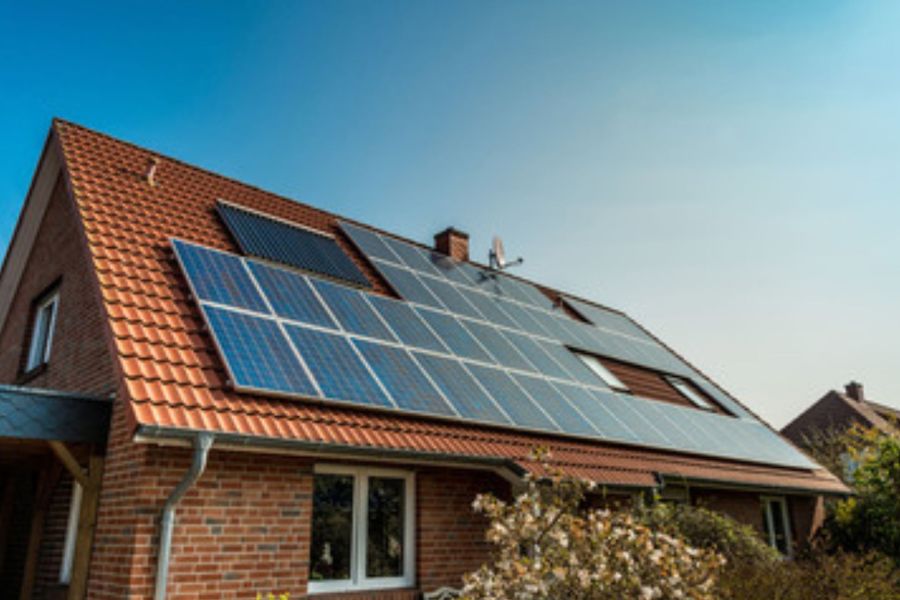Expanding Solar Capacity in the UK: A Comprehensive Analysis of Growth, Regional Trends, and Future Prospects

Solar energy has emerged as a cornerstone of the UK’s renewable energy strategy, with recent data highlighting substantial growth in solar capacity across the country. In August 2024, the UK’s solar photovoltaic (PV) capacity surpassed 16 gigawatts (GW), underscoring the increasing shift towards clean, renewable energy sources. This article delves into the significant progress made in the UK’s solar capacity, examining regional trends, growth drivers, and the critical role solar energy plays in achieving the UK’s Net Zero ambitions. Solar energy, with its potential to significantly reduce carbon emissions and provide a reliable source of energy, is a key player in the UK’s journey towards a sustainable, low-carbon future.
Understanding Solar Capacity: What It Means for Energy Independence
Solar capacity refers to the potential of solar installations across the UK to generate electricity under optimal conditions. It’s typically measured in megawatts (MW) or gigawatts (GW), and the cumulative solar capacity grows with each new installation. Solar capacity is essential for understanding how much energy can be produced by solar power systems and how effectively the UK is advancing towards a sustainable, low-carbon energy system. With cumulative capacity reflecting all previous installations, the steady rise in the UK’s solar capacity provides a powerful indicator of the public and government’s commitment to a cleaner, greener future.
The Progression of Solar Capacity in the UK Since 2010
Since the early 2010s, solar capacity in the UK has shown remarkable growth, increasing from just 93.7MW in 2010 to nearly 17GW in 2024. This growth has been significantly driven by policy support, technological advances, and increasing public awareness of the benefits of renewable energy. Between 2012 and 2016, solar capacity witnessed its fastest growth, mainly due to government incentives that made solar installations more affordable and accessible to homeowners and businesses. Although the growth rate slowed after 2016, solar capacity has continued to increase steadily, with recent years seeing a renewed interest in solar energy.
A notable surge from 2022 to 2024 can be attributed to rising concerns about climate change, advancements in solar technology, and an expanding market for energy storage solutions, making solar power more practical and appealing for a broader range of applications. This growth trend in solar capacity reflects the increasing importance of renewable energy in the UK’s overall energy strategy. It signals the country’s continued commitment to achieving its Net Zero goals.
Regional Variations in Solar Capacity Across the UK
The distribution of solar capacity across the UK varies significantly by region, with both urban and rural areas showing distinct patterns in adoption. The data reveals that rural regions generally exhibit higher solar capacity than urban counterparts, largely due to greater availability of space and less restrictive planning regulations.
England: In England, South Cambridgeshire leads with an impressive 27.6MW, closely followed by Torridge and West Devon with 23.1MW. Rural constituencies in South and East England tend to have higher solar capacity due to more rooftop space on detached homes and lower-density housing. Urban areas like London and Westminster have lower capacities, averaging around 1.9MW, primarily due to high-density housing and limited rooftop availability. These figures indicate that space constraints in densely populated areas pose a considerable barrier to scaling solar capacity.
Scotland: In Scotland, solar capacity distribution reveals a marked highland-lowland divide. Banff and Buchan list 18.9MW, while urban regions such as Glasgow North, Edinburgh North and Leith have much lower capacities, at 0.9MW and 1.4MW, respectively. The availability of space and less restrictive planning permissions in rural Scottish areas allow for higher solar capacity compared to urban centres, where limited space and regulatory constraints impact the feasibility of solar installations.
Wales: Ceredigion leads in solar capacity among Welsh constituencies, with 17.8MW, followed by Preseli Pembrokeshire with 17.0MW. Rural areas in Wales demonstrate higher capacities than urban regions like Cardiff Central, which records only 2.7MW. A clear rural-urban divide exists, as rural properties with larger rooftops are more conducive to solar installations. Additionally, the topography and density of urban areas further restrict installation space.
Northern Ireland: South Down holds the highest capacity at 11.1MW in Northern Ireland, with other rural constituencies like Fermanagh South Tyrone and Mid-Ulster also leading in capacity. Conversely, Belfast West has one of the lowest capacities, at 2.2MW, demonstrating the same rural-urban divide in other UK regions. The disparity suggests that property characteristics, space availability, and rural housing structures make solar capacity growth more feasible outside urban centres.
Factors Driving Regional Differences in Solar Capacity
The stark contrasts in solar capacity across UK regions can be attributed to several key factors:
Space Availability: Rural regions tend to have more significant properties with more rooftop space suitable for solar installations. Space limitations, apartment complexes, and multi-storey buildings challenge solar capacity expansion in densely populated urban areas. Detached and semi-detached houses, commonly found in rural and suburban areas, are ideal for rooftop solar installations, whereas urban areas often face space constraints and issues of shared ownership.
Planning Regulations: Planning restrictions significantly impact solar capacity. Urban areas, particularly historical and architecturally protected sites, impose stringent regulations on solar installations, adding to the time and cost involved. Rural regions generally face fewer restrictions, enabling more rapid adoption. Thus, local authorities’ varying planning policies partly shape regional differences in solar capacity growth.
Grid Infrastructure: Connecting solar installations to the grid can be challenging in regions with less robust infrastructure, mainly rural areas. Grid capacity issues may result in delays, additional costs, or limitations on the number of installations that can be supported, impacting the ability to increase solar capacity.
Public Policy Support: Local incentives, such as subsidies or grants for renewable energy projects, influence the pace and extent of solar capacity expansion. Adoption rates are generally higher in areas where councils actively promote solar energy. For example, areas with solar-friendly policies have seen quicker growth, while those without support have lagged, reflecting the significant impact that policy can have on solar adoption.

Solar Capacity and the Path to Net Zero by 2050
The UK’s Net Zero target by 2050 relies heavily on the potential of renewable energy expansion, with solar energy positioned as a vital component of the clean energy mix. Solar capacity, which has grown considerably over the past decade, will continue to be crucial in reducing the UK’s carbon footprint and transitioning away from fossil fuels. As the 2023 surge in installations, with nearly 190,000 new solar systems, illustrates, solar adoption is accelerating, paving the way for more sustainable energy production. Solar capacity is thus an essential metric for assessing the UK’s progress towards Net Zero, as increased capacity means a higher potential for replacing traditional energy sources with clean, renewable solar power.
Addressing Solar Capacity Disparities: Recommendations for the Future
While the growth in solar capacity is promising, regional disparities highlight areas for improvement. Increasing solar capacity across the UK, particularly in urban areas and regions with limited grid infrastructure, will require targeted policy support and infrastructure investment. Key recommendations include:
Incentivising Urban Solar Installations: Offering tax breaks or grants for urban installations can help mitigate space constraints and increase adoption in cities. Vertical solar installations, such as solar walls or PV-integrated windows, could also be explored as solutions in urban settings with limited rooftop space.
Investing in Grid Infrastructure: Enhancing grid capacity, particularly in rural areas, can alleviate delays and additional costs associated with solar installations. A robust grid will support increased solar capacity, making integrating more renewable energy into the power system easier.
Streamlining Planning Approvals: Simplifying the planning process, particularly for small-scale residential installations, can accelerate solar adoption. Easing restrictions on solar installations in historical areas without compromising architectural integrity can further encourage growth.
Public Awareness Campaigns: Educating homeowners and businesses about the long-term benefits of solar capacity growth, from energy savings to environmental impact, can drive adoption rates. Awareness initiatives can play a pivotal role in overcoming public misconceptions and encouraging broader participation in renewable energy.
Promoting Technological Innovation: Technological advances, such as efficient energy storage solutions, can maximise the value of solar installations, making them more appealing to a wider range of users. Innovations in solar technology, from flexible solar panels to battery storage, can make solar energy accessible and practical across more varied settings.
The Role of Private Sector and Community Initiatives in Solar Capacity Expansion
While government support is essential, the private sector and community-led initiatives are critical in advancing solar capacity. Companies like Project Solar, a prominent UK solar installer, contribute to expanding solar capacity by offering installation and maintenance services tailored to individual needs. Community initiatives, such as solar cooperatives, can further increase accessibility, allowing neighbourhoods to invest collectively in solar infrastructure.
As awareness of solar capacity benefits grows, community-driven projects have the potential to expand renewable energy accessibility across a broader demographic. By making solar installations more affordable through cooperative ownership and reducing the financial burden on individual homeowners, these initiatives can boost adoption and contribute to achieving Net Zero goals.

A Path Forward for Solar Capacity in the UK
Over the past decade, the UK’s solar capacity growth reflects a significant shift toward renewable energy and a commitment to sustainability. While the progress is commendable, achieving the full potential of solar energy will require addressing regional disparities, investing in grid infrastructure, and ensuring supportive policy frameworks. As solar capacity continues to grow, it will play an increasingly vital role in reducing greenhouse gas emissions, enhancing energy security, and driving the UK’s journey toward a Net Zero future.
With collective action from government, private sector, and community initiatives, the UK is well-positioned to build on its existing solar capacity, paving the way for a sustainable, clean energy future. Whether through policy incentives, grid improvements, or continued technological innovation, the UK’s solar capacity will remain integral to the nation’s energy strategy. The commitment to expanding solar capacity not only secures a cleaner future but also positions the UK as a leader in renewable energy innovation and sustainable development on a global scale.





